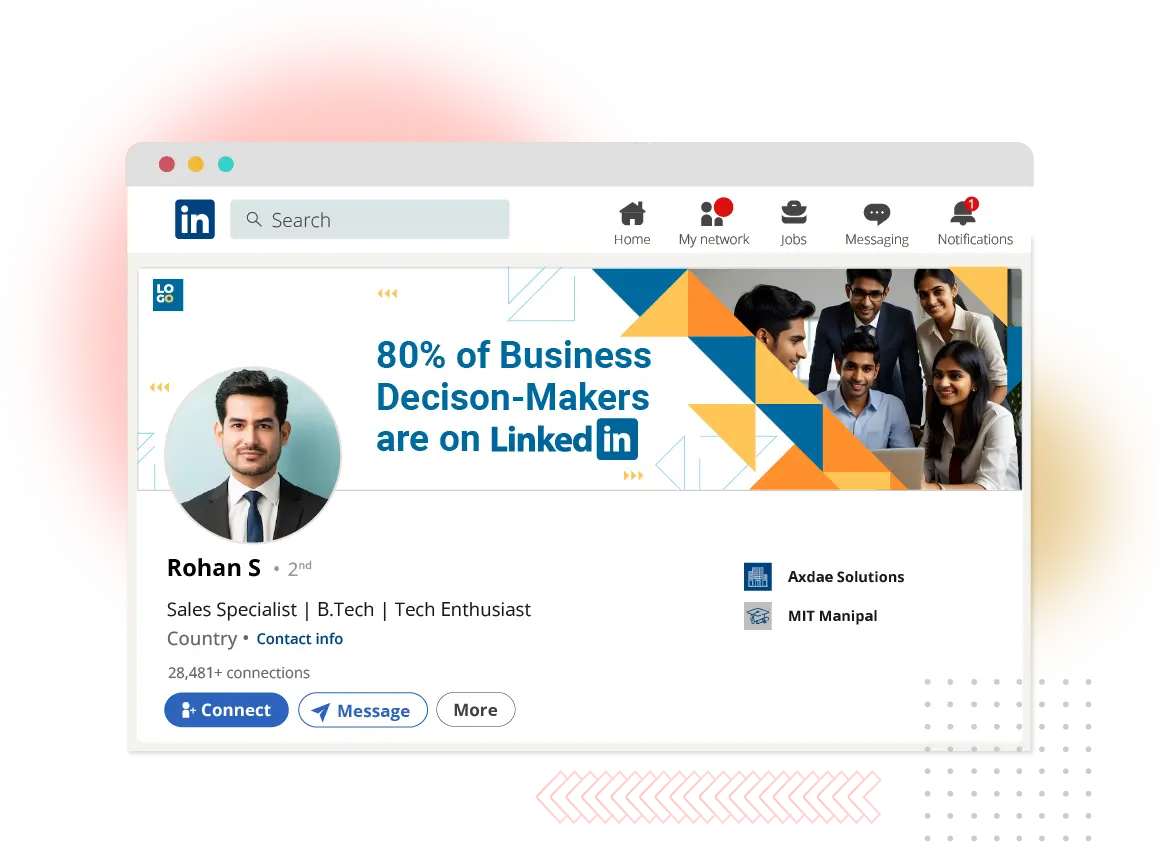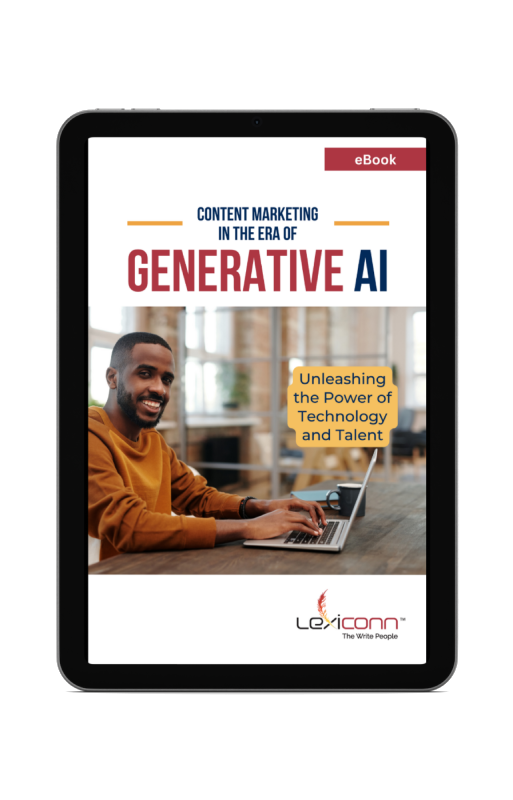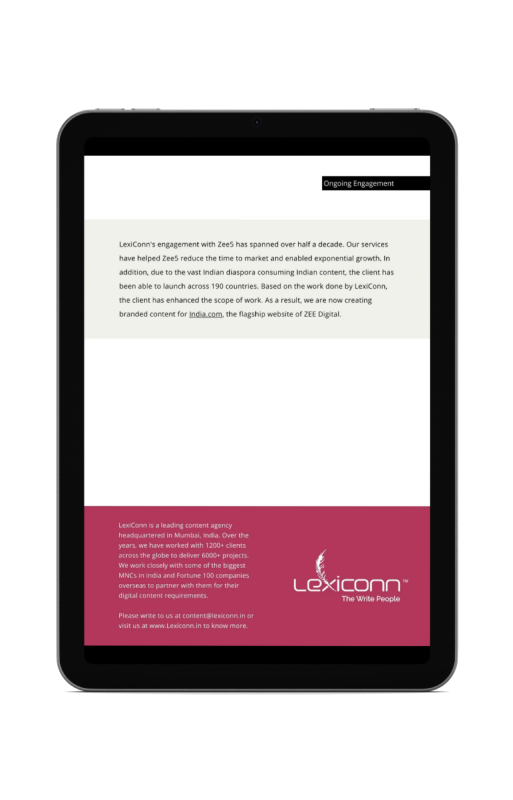(Source)
LinkedIn branding is no longer optional for business leaders. It has become a vital strategy to build visibility, foster trust, and establish CXO influence. With over 1 Billion professionals on LinkedIn, this platform serves as the ultimate stage for executives to showcase their expertise, connect with peers, and drive business growth.
This three-part blog will guide you through the best LinkedIn branding strategies for leaders, helping you grow your personal brand and authority step by step.
Part 1: Setting the Foundation for LinkedIn Growth
(Source)
Why LinkedIn Branding is Essential for Leaders
LinkedIn is more than a networking platform—it’s a hub for thought leadership, professional networking, and business opportunities. Here’s why every leader should prioritize their LinkedIn presence:
- Establish Thought Leadership: By sharing insights and trends, you can position yourself as an industry expert.
- Strengthen CXO Influence: A strong personal brand builds trust and credibility among peers, employees, and stakeholders.
- Attract Opportunities: From partnerships to talent acquisition, LinkedIn opens doors to countless opportunities.
- Drive Business Growth: With 80% of B2B leads originating from LinkedIn, it’s a powerful tool for business development.
For leaders aiming to make an impact, growing their LinkedIn authority is indispensable.
Step 1: Optimize Your LinkedIn Profile
Your profile is the cornerstone of your LinkedIn branding strategy. It’s often the first impression people have of you—and first impressions matter.
Key Elements of an Optimized Profile:
- Professional Headshot: Use a high-quality image that reflects confidence and approachability.
- Compelling Headline: Go beyond your job title. Highlight your expertise and value proposition (e.g., “Transforming Digital Ecosystems | CEO | Advocate for Sustainable Tech”).
- Engaging Summary: Craft a narrative that captures your mission, achievements, and vision in 2–3 short paragraphs. Include keywords like “LinkedIn branding” and “personal brand” for SEO optimization.
- Custom URL: Simplify your profile URL (e.g., linkedin.com/in/yourname) to enhance discoverability.
- Featured Section: Showcase key achievements, articles, or videos that reflect your leadership journey.
Example of an Optimized Profile:
Consider Satya Nadella’s LinkedIn profile—his headline reflects his role at Microsoft while his summary highlights his vision for digital transformation.
Step 2: Define Your Personal Brand
Your personal brand is what sets you apart from others in your industry. It’s a combination of your values, expertise, and unique perspective.
Steps to Define Your Brand:
- Identify your core values and areas of expertise.
- Develop a personal mission statement that aligns with your professional goals.
- Ensure consistency in messaging across all platforms.
For example, if you’re passionate about innovation in healthcare, focus on sharing content around digital health trends and challenges.
Step 3: Build Authority with Thought Leadership Content
Content is the backbone of LinkedIn branding. Sharing valuable insights not only boosts engagement but also establishes you as a trusted voice in your industry.
Types of Content to Share:
- Industry Insights: Share articles or posts on emerging trends in your field.
- Leadership Lessons: Offer advice based on your experiences as a CXO.
- Storytelling: Humanize your brand by sharing challenges you’ve overcome or milestones you’ve achieved.
- Engaging Formats: Experiment with polls, carousels, or live videos to keep content dynamic.
Pro Tip:
Use long-form posts to dive deep into topics like “How to Grow LinkedIn Authority” or “Best Practices for CXO Influence.” This not only adds value but also encourages meaningful engagement.
Step 4: Engage Strategically with Your Network
Building relationships on LinkedIn requires more than just posting content—it demands active participation.
How to Engage Effectively:
- Comment thoughtfully on posts from peers or industry leaders.
- Join relevant groups to exchange ideas and expand your reach.
- Use personalized messages when connecting with new people to foster genuine relationships.
Remember, engagement is a two-way street—respond promptly to comments on your posts to build trust.
Real-Life Example:
Whitney Wolfe Herd (CEO of Bumble) leverages storytelling on LinkedIn to highlight Bumble’s mission while sharing her journey as an entrepreneur. Her posts resonate because they are authentic and aligned with her brand values.
Part 2: Advanced Strategies for LinkedIn Branding
(Source)
Building a strong foundation on LinkedIn is just the beginning. To truly stand out, business leaders must adopt advanced strategies that leverage the platform’s tools, features, and analytics.
1. Leverage Multimedia Content for Maximum Engagement
In 2025, content on LinkedIn is no longer limited to text-based posts. The platform has evolved into a multimedia hub where videos, infographics, and carousels drive higher engagement rates.
Why Multimedia Matters:
- Videos Dominate Engagement: Video content on LinkedIn generates 5x more engagement than text or image-based posts. Short-form videos under 60 seconds are particularly effective in capturing attention.
- Infographics Simplify Complex Ideas: Infographics are a great way to present data or insights in a visually appealing format, making it easier for your audience to grasp key takeaways.
- Carousels Boost Dwell Time: Carousel posts encourage users to swipe through multiple slides, increasing the time they spend engaging with your content.
Pro Tips for Multimedia Content:
- Use subtitles in videos since 80% of LinkedIn users watch videos without sound.
- Keep videos authentic and relatable; polished perfection is less important than genuine messaging.
- Share behind-the-scenes glimpses of your leadership journey or company culture to humanize your brand.
2. Use LinkedIn Analytics to Refine Your Strategy
To grow your LinkedIn authority, it’s essential to track performance metrics and adjust your strategy accordingly. LinkedIn Analytics provides valuable insights into profile views, post engagement, and audience demographics.
Key Metrics to Monitor:
- Engagement Rate: Track likes, comments, and shares to understand what type of content resonates with your audience.
- Follower Growth: Monitor the increase in followers over time to gauge the effectiveness of your branding efforts.
- Content Performance: Identify which posts perform best and replicate their format or topic focus in future content.
- Demographics: Analyze the industries, job titles, and locations of your audience to tailor content more effectively.
How to Use Analytics for Growth:
- Compare your performance against competitors using third-party tools like Hootsuite or AgencyAnalytics for deeper insights.
- Set clear goals based on data trends (e.g., increasing engagement by 20% over six months).
- Optimize underperforming posts by tweaking headlines, visuals, or call-to-actions (CTAs).
3. Promote Your Company Through Your Personal Brand
As a business leader, you are not just representing yourself—you’re also an ambassador for your organization. Highlighting your company’s achievements on LinkedIn can reinforce both your personal brand and corporate credibility.
Effective Ways to Promote Your Company:
- Share updates about major milestones like product launches or awards.
- Post client testimonials or case studies showcasing the impact of your company’s solutions.
- Highlight employee achievements to demonstrate strong leadership and foster team pride.
Example:
A CXO could share a post about their company winning an industry award while tagging team members involved in the project—this not only celebrates success but also builds engagement across networks.
4. Collaborate with Influencers and Thought Leaders
Partnering with industry influencers can amplify your message and extend your reach on LinkedIn.
Steps to Build Strategic Collaborations:
- Use LinkedIn’s Advanced Search feature to identify thought leaders in your niche.
- Engage with their content by commenting or sharing before reaching out for collaboration.
- Co-create content like webinars, articles, or panel discussions that provide mutual value.
Collaborations not only enhance visibility but also position you as a trusted voice within a broader professional community.
5. Consistency is Key
Consistency is the secret ingredient behind successful personal branding on LinkedIn.
Tips for Maintaining Consistency:
- Post regularly (at least 2–3 times per week) to stay top-of-mind with your audience.
- Use a consistent tone and visual style across all posts to reinforce brand identity.
- Align personal content themes with organizational goals for cohesive messaging.
Consistency builds trust over time, ensuring that your audience sees you as a reliable source of insights.
Part 3: Building CXO Influence and Driving Results
1. Activate Creator Mode for Enhanced Visibility
LinkedIn’s Creator Mode is a powerful feature that prioritizes your content in the platform’s algorithm, making it more visible to your network and beyond. For leaders sharing insights regularly, this feature is a must-have to amplify reach and engagement.
Benefits of Creator Mode:
- Highlights your content in the Activity section of your profile.
- Allows you to showcase hashtags that define your expertise (e.g., #LeadershipInsights, #CXOInfluence).
- Unlocks advanced tools like LinkedIn Live and Newsletters to engage with your audience more interactively.
How to Use It Effectively:
- Post consistently on topics that align with your brand pillars, such as leadership lessons, industry trends, or company updates.
- Use relevant keywords like “LinkedIn branding” or “personal brand” in your posts to improve discoverability.
- Host live sessions or webinars to discuss pressing industry issues or share your vision as a leader.
2. Publish Long-Form Content to Establish Thought Leadership
While short posts are great for quick engagement, long-form articles allow you to dive deeper into complex topics and showcase your expertise. These articles remain searchable on both LinkedIn and Google, giving them a longer shelf life compared to regular posts.
Topics for Long-Form Content:
- “Best LinkedIn Branding Strategies for Leaders”
- “How to Grow LinkedIn Authority as a CXO”
- “The Role of Personal Branding in Modern Leadership”
Tips for Writing Articles:
- Start with an attention-grabbing headline that includes primary keywords like “LinkedIn branding” or “CXO influence.”
- Structure your article with clear subheadings and concise paragraphs for readability.
- Include actionable insights backed by data or real-life examples to add credibility.
3. Build Relationships Through Personalized Engagement
Engagement is the lifeblood of LinkedIn growth. However, it’s not just about posting—it’s about fostering genuine conversations that add value to your network.
Strategies for Meaningful Engagement:
- Respond Thoughtfully: When someone comments on your post, reply with more than just “thank you.” Add insights, ask follow-up questions, or tag others who might contribute to the discussion.
- Comment on Industry Posts: Share thoughtful perspectives on trending topics within your field to increase visibility among peers and potential collaborators.
- Personalize Connection Requests: Avoid generic invites; instead, include a brief message explaining why you’d like to connect.
Example of Personalized Outreach:
“Hi [Name], I enjoyed your recent post on [Topic]. As someone passionate about [Shared Interest], I’d love to connect and exchange ideas.”
4. Leverage Groups and Communities for Niche Networking
LinkedIn Groups are an excellent way to connect with like-minded professionals and engage in discussions relevant to your industry.
How to Use Groups Effectively:
- Join groups aligned with your expertise or interests (e.g., “Digital Transformation Leaders”).
- Actively participate by sharing insights, asking questions, or starting discussions.
- Avoid being overly promotional—focus on adding value through meaningful contributions.
By engaging in niche communities, you can strengthen your personal brand while expanding your professional network.
5. Showcase Impactful Achievements in the Featured Section
The Featured section of your profile acts as a digital portfolio where you can highlight key accomplishments that reinforce your leadership credentials.
What to Include:
- Case studies showcasing successful projects or initiatives.
- Links to media coverage or interviews featuring you or your company.
- Awards, certifications, or recognitions that validate your expertise.
Updating this section regularly ensures that visitors see the most relevant aspects of your professional journey.
6. Align Personal Branding with Organizational Goals
As a CXO, your personal brand is intrinsically linked to your organization’s reputation. By aligning the two, you can create a cohesive narrative that resonates with both internal and external stakeholders.
Ways to Align Your Brand:
- Share posts about company milestones or social initiatives.
- Highlight team achievements to demonstrate collaborative leadership.
- Incorporate organizational values into your personal content strategy.
This approach not only strengthens CXO influence but also fosters trust among employees, partners, and clients.
7. Consistency is Key
Consistency is the backbone of any successful LinkedIn branding strategy. It ensures that you remain visible and relevant in the minds of your audience.
Tips for Maintaining Consistency:
- Create a content calendar outlining topics and posting schedules.
- Stick to a posting frequency of at least two times per week.
- Use analytics tools to identify high-performing content and replicate its success.
Consistency builds familiarity, which in turn fosters trust—a critical component of effective leadership branding.
Conclusion: The Path Forward for LinkedIn Success
Building a powerful brand on LinkedIn requires more than just an optimized profile—it demands intentionality, authenticity, and consistency across all interactions. By following these strategies—activating Creator Mode, publishing thought leadership content, engaging meaningfully with connections, leveraging groups, showcasing achievements, aligning personal branding with organizational goals, and maintaining consistency—you can unlock unparalleled opportunities for professional growth.
Whether you’re looking to enhance CXO influence or grow LinkedIn authority as an executive leader, this blueprint provides actionable steps tailored for success in 2025 and beyond.
Ready to elevate your LinkedIn presence? Visit us at www.lexiconn.in or drop us a line at [email protected]! LexiConn also offers a FREE 30-minute content consultation session tailored specifically for business leaders looking to refine their social media branding strategy!
Boost your Content Strategy.
Download the Free eBook now.
Unlock Generative AI's potential for content marketing success. Unearth its impact on teams and businesses. Witness real-life examples and case studies, showcasing AI-driven content ingenuity.








